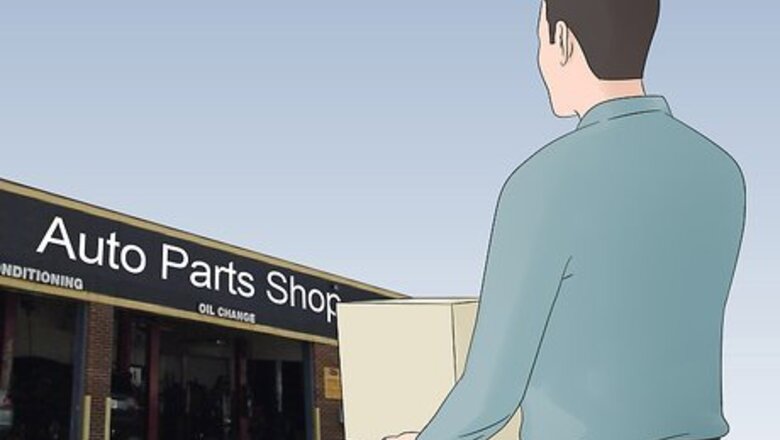
views
Recycling Lead-Acid Batteries
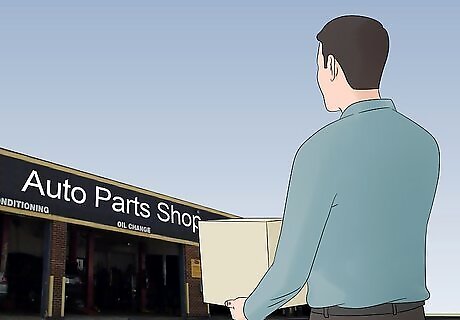
Deliver used batteries to an auto parts shop or mechanic, if possible. Most auto parts shops and many mechanic workshops have recycling programs for used car batteries and other types of lead-acid batteries. Look up these types of businesses in your area and call around to check if they will receive your used batteries, then drop off the batteries when they’re open.Warning: According to the Environmental Protection Agency (EPA), lead-acid batteries must always be recycled at a proper facility. You are prohibited from throwing them out in the trash or putting them in with your regular recycling. It can be a pain to do this, but it’s important for the environment, so it’s worth the extra trouble. Businesses that receive used lead-acid batteries will then ship out the old batteries in bulk to be recycled by manufacturers. About 60-80% of the materials in new lead-acid batteries actually come from recycled batteries! Many auto shops take a deposit on batteries when they are initially purchased. This means that you will likely receive money back when you drop off your old battery or get a discount when you purchase a new battery. Some examples of big auto parts and service chains that recycle lead-acid batteries are Napa Auto Parts, Jiffy Lube, Firestone Complete Auto Care, and Autozone.
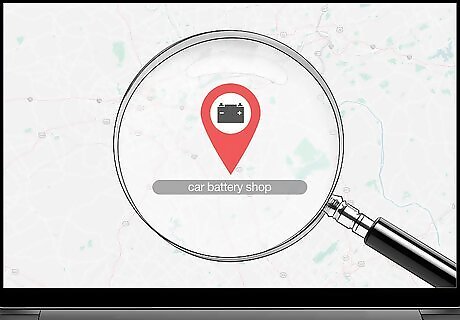
Find a retailer that sells lead-acid batteries if you can’t find a nearby auto shop. Other types of retailers that sell things like car batteries might also recycle them. Call around to home improvement centers or specialty battery shops to find a retailer that recycles batteries, then take your batteries in during store hours. These types of retailers might give you a deposit back on your old battery or offer free recycling or a discount on a new battery if you purchase a new battery at the same time. If you buy a new battery from a retailer without dropping off an old one, you will probably have to pay an additional “core charge” on the new battery. For example, a marine supply shop or boat dealer might recycle lead-acid batteries. You can try searching the Internet with terms like: “car battery retailer in Seattle,” if you live in Seattle, for example.
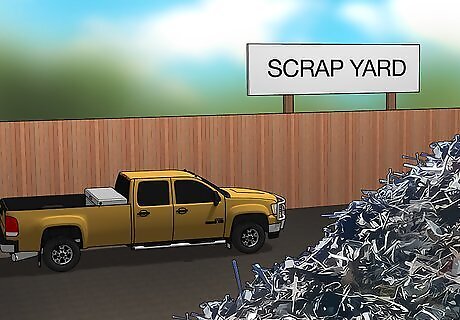
Take your used lead-acid batteries to a scrap yard if there are no local retailers. Most scrap metal recyclers and junk yards will also recycle your old batteries. Look up these types of businesses in your area and call them up to ask whether they receive used batteries, then take your batteries in during their open hours to get them off your hands. Many scrap metal recyclers will pay you a small fee for your used batteries. You can Google something like: “scrap yard battery recycler near me” to find a scrap yard that will take your used batteries.
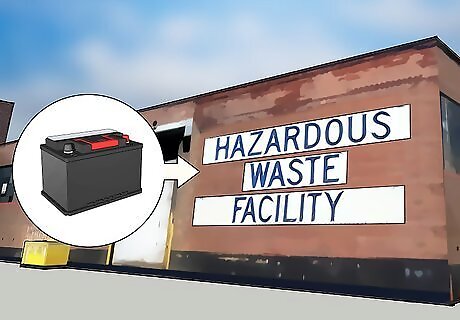
Bring used batteries to a hazardous waste recycling facility as a last resort. Search for hazardous waste recycling services in your area or call up your local dump and ask if they take used lead-acid batteries. Ask what days and times they are open for drop-off and take your battery in at a convenient time. Depending where you live, there might even be a pick-up service that you can schedule. Your local dump should have all the info or you can do some Googling to find out. Keep in mind that hazardous waste recycling facilities and services usually charge a fee to take your old batteries off your hands. Make sure you ask about this fee and bring along an accepted form of payment when you drop off the battery. Try entering a search term on your Internet browser like: “hazardous waste recycling service in Portland,” if you live in Portland, for example.
Getting Rid of Sulfuric Battery Acid
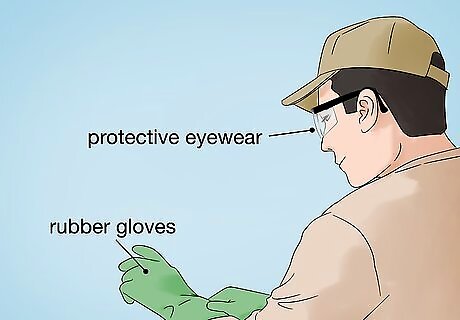
Wear rubber gloves and protective eyewear when handling sulfuric battery acid. Put on thick rubber gloves and goggles or safety glasses before you handle battery acid or regular sulfuric acid. It can cause serious burns if you get it on your skin or in your eyes. The method of disposal is the same for both sulfuric battery acid, which is just diluted sulfuric acid, and full-strength sulfuric acid. You might need to dispose of sulfuric battery acid if you buy some to refill something like a sump pump battery and have a little bit left over that doesn’t fit in the battery, for example.
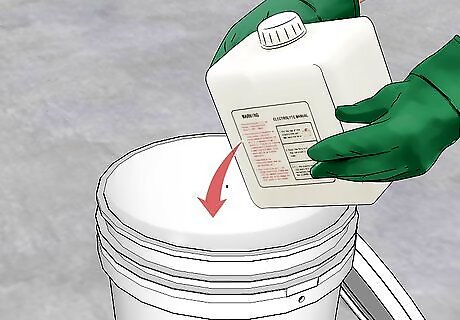
Place leftover sulfuric battery acid in a sealable polyethylene container. Carefully pour the sulfuric acid or place a container holding sulfuric acid into a sealable polyethylene container. Close the container and make sure it is fully sealed.Tip: Try to only buy battery acid in quantities that you will use up right away to avoid having to dispose of it. For example, if you need to fill a sump pump battery, buy just enough battery acid to fill the battery, rather than purchasing an excessive amount. Polyethylene is a type of plastic that won’t corrode when it comes into contact with sulfuric acid. Avoid using other types of plastic that can deteriorate. You can buy a polyethylene container online or at a home improvement center.
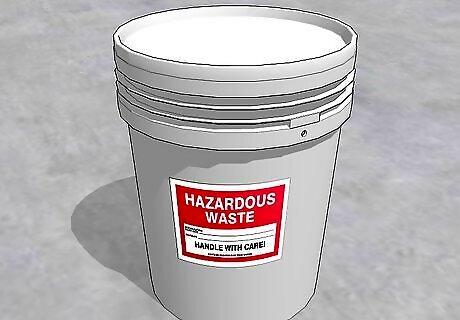
Label the container with a hazardous waste label. Print out a hazardous waste label on adhesive paper and stick it to the container, or print it on normal paper and use tape to affix it. This will ensure nobody accidentally opens up the container before you dispose of it, which could lead to an unfortunate accident. You can also order hazardous waste labels online, but if you just need to dispose of battery acid one time, it’s easier to print one out.
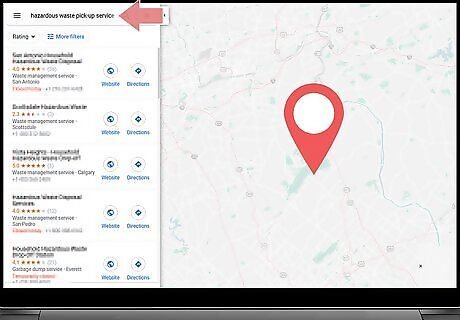
Schedule a household hazardous waste pick-up if there is a local service. Enter keywords like “household hazardous waste pick-up service” in an online search engine to find out if there are these types of services provided by the local government or private companies in your area. Call up one of the services, if there are any, and schedule a time for them to pick up the sulfuric acid to properly dispose of it. Never throw out a container holding sulfuric battery acid with your trash or recycling. You must dispose of it with a hazardous waste disposal service. Some cities have free hazardous waste pick-up services. If not, you might have to pay a fee for a privately-owned service to come get it. This cost will depend on the service where you live, so make sure to ask about it.
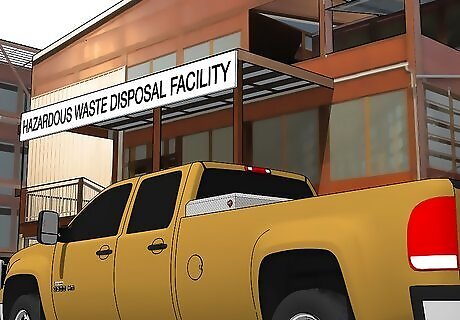
Drop the container off at a hazardous waste disposal facility as an alternative. Look for hazardous waste disposal facilities in your area or call your local dump and ask if they accept hazardous waste, as most do. Take the container in during the facility’s hours of operation and drop it off to them. Keep in mind you might have to pay a fee to dispose of the battery acid. Ask about this on the phone and make sure to bring along an accepted form of payment when you drop the sulfuric acid off. The cost varies depending on where you live, so find out by asking.
Handling and Storing Used Lead-Acid Batteries

Put on rubber gloves and protective eyewear before handling batteries. Battery acid can burn your skin or eyes. Always wear rubber gloves and goggles or safety glasses when you touch a used lead-acid battery.Tip: Examples of lead-acid batteries are car batteries, boat batteries, emergency lighting batteries, and pump sump batteries. If you do accidentally get battery acid on your skin or in your eyes, flush the area with lukewarm, gently flowing water for 30 minutes. If irritation persists, seek medical assistance right away.
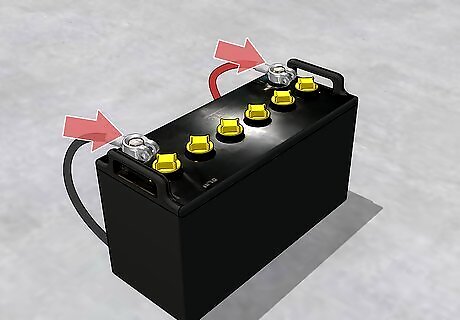
Leave the battery cables attached to the lead terminals. Don’t attempt to remove the cables or disassemble the battery in any way. Store and recycle it as is. The battery cables have lead ends, which is another hazardous material that must be recycled properly along with the rest of the battery. Tampering with a lead-acid battery in any way could damage it and cause it to start leaking.
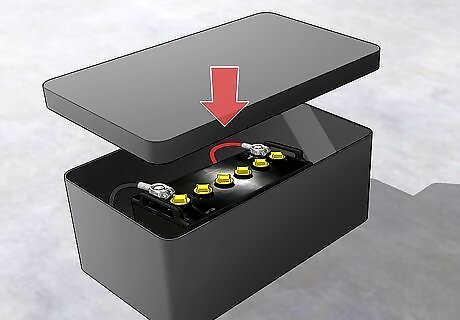
Place used lead-acid batteries inside a sealed, leak-proof container. Put used batteries inside something like a plastic bucket with a lid or a special battery box. This will prevent battery acid from leaking onto surfaces that it can damage or contaminating the environment. You can get special battery boxes made out of plastic or fiberglass at an auto parts store. Battery acid can eat through concrete, so if you have to put it on the ground, try to set it on sealed asphalt. If a battery leaks battery acid onto the ground, you can soak it up with baking soda or lime. Note that you will have to dispose of the baking soda or lime as hazardous waste.
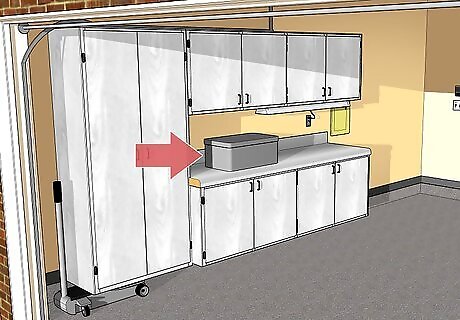
Store used batteries in a well-ventilated, cool, and dry area. Put the container holding your used lead-acid battery somewhere like a cool, dry garage or shed. Keep it away from heat and moisture. Excessive heat can damage batteries and moisture causes corrosion, which can both cause a battery to start leaking.
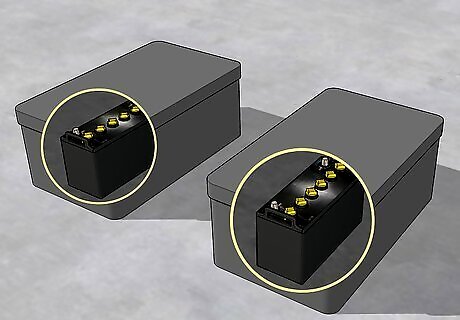
Keep multiple batteries separated to avoid short circuits. Place batteries in individual sealed containers whenever possible. Separate them with a piece of wood or other non-conductive material if you have to place them in the same container. If the terminals of 2 batteries touch and short circuit they can cause a fire.
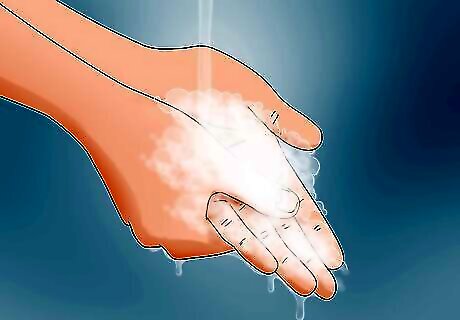
Wash your hands with soap and water right away after handling used batteries. Remove your gloves and rinse your skin off thoroughly. Lather up your hands with soap and rinse them off. Even though your hands were protected with gloves, you should always do this in case a drop of battery acid somehow got inside them.
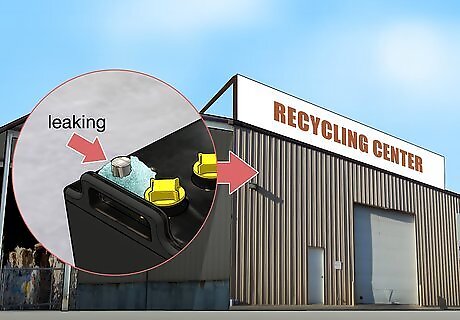
Take leaking or damaged batteries to a recycler immediately. Don’t leave used lead-acid batteries in storage if they are cracked or leaking. Transport them inside a sealed container to the nearest recycling facility as soon as possible to be safe. Even if the battery looks fine at first glance and you don’t see any leaking fluid, inspect it carefully all over for small cracks and other damage that could leak battery acid.


















Comments
0 comment